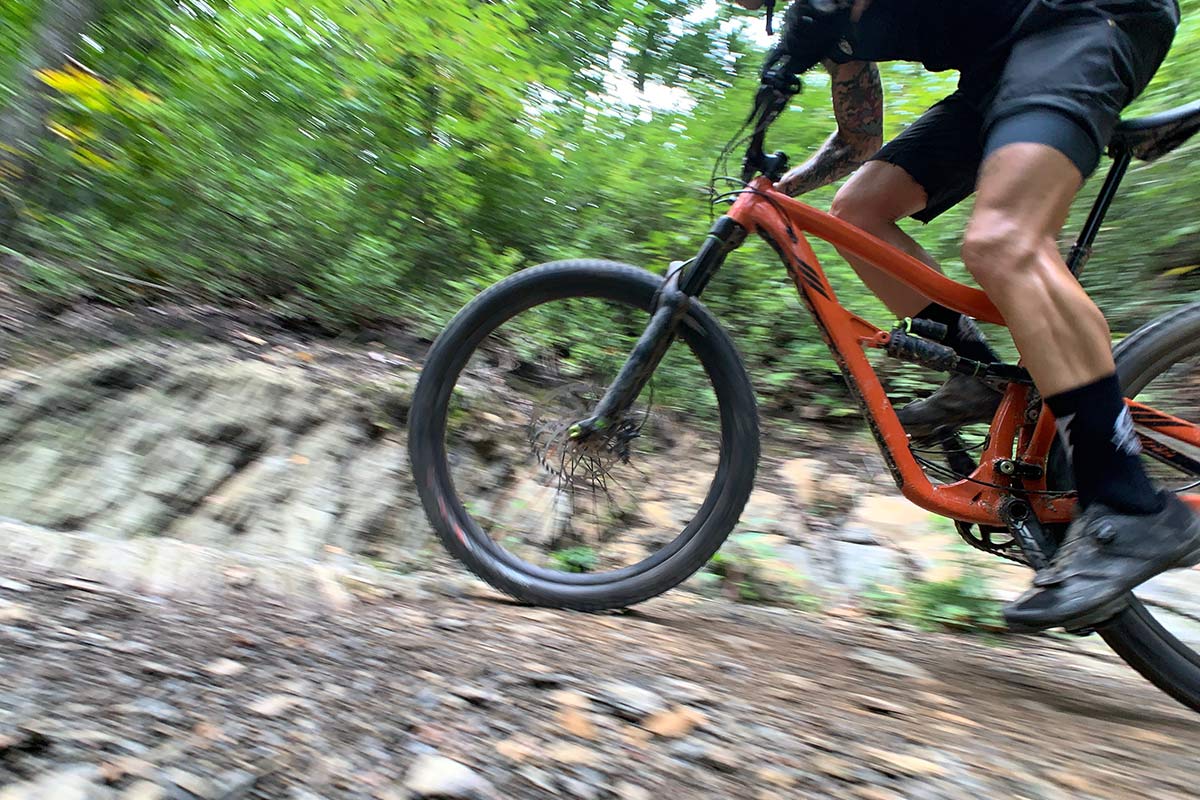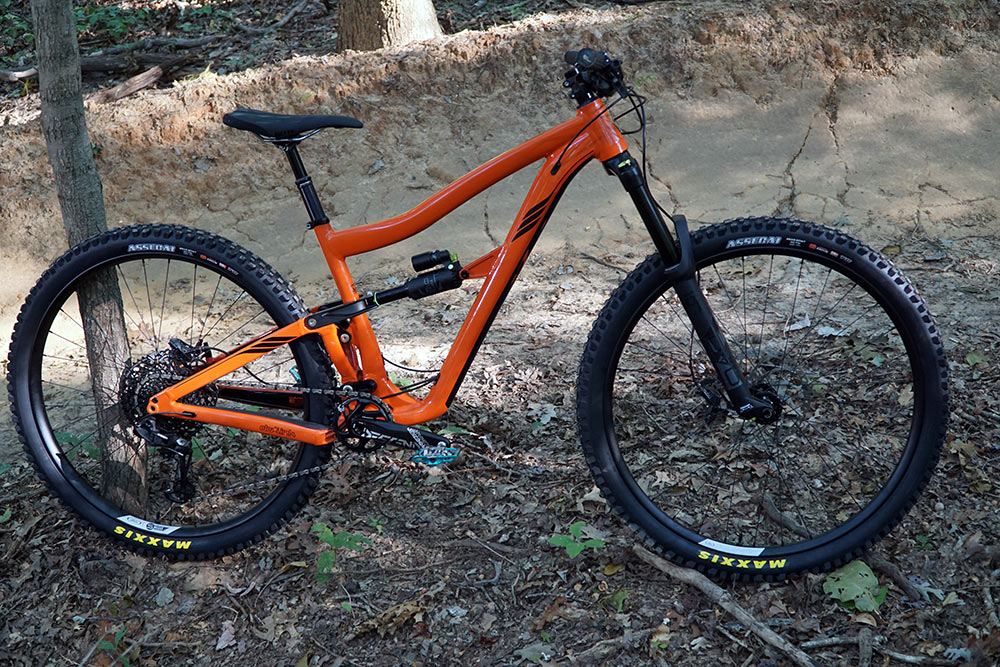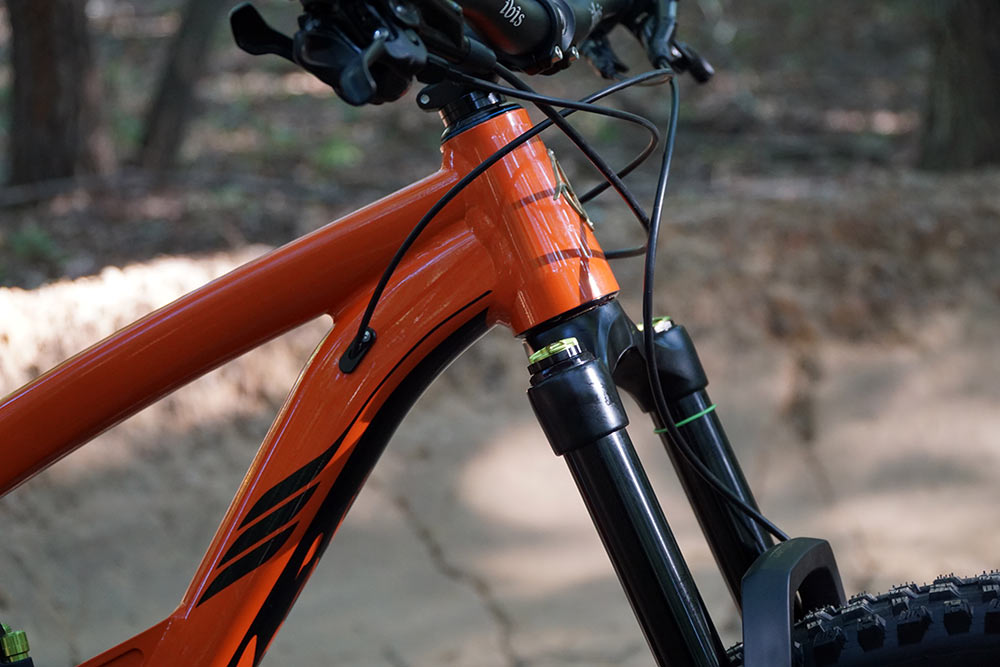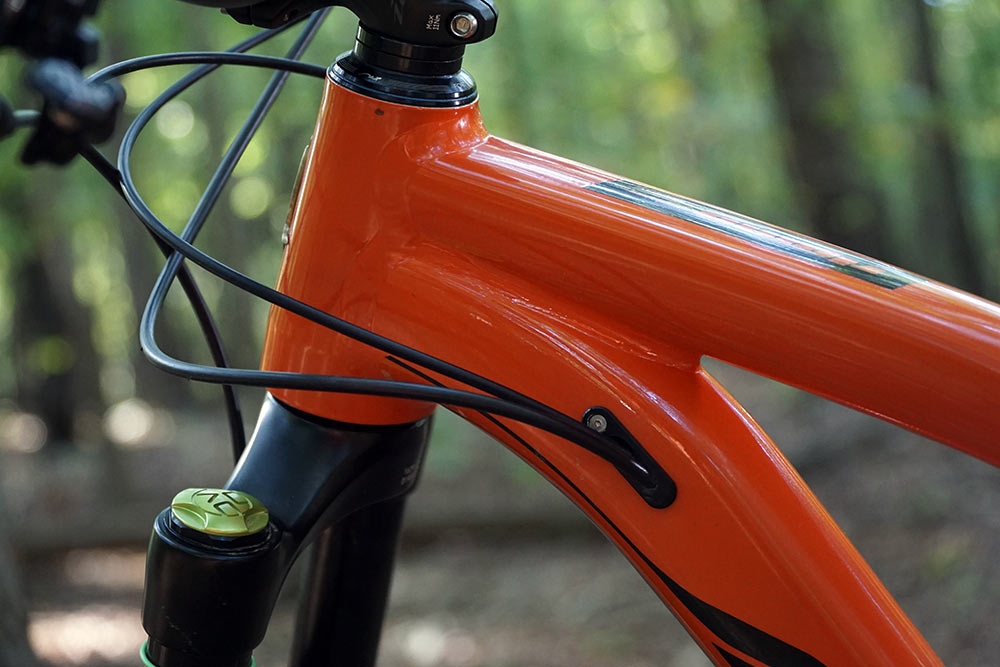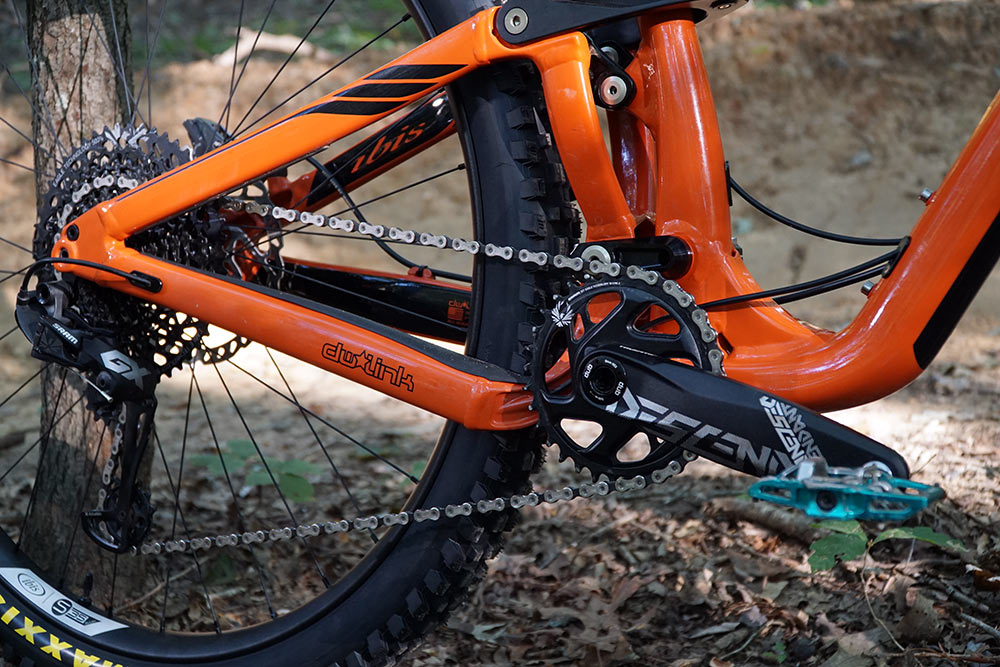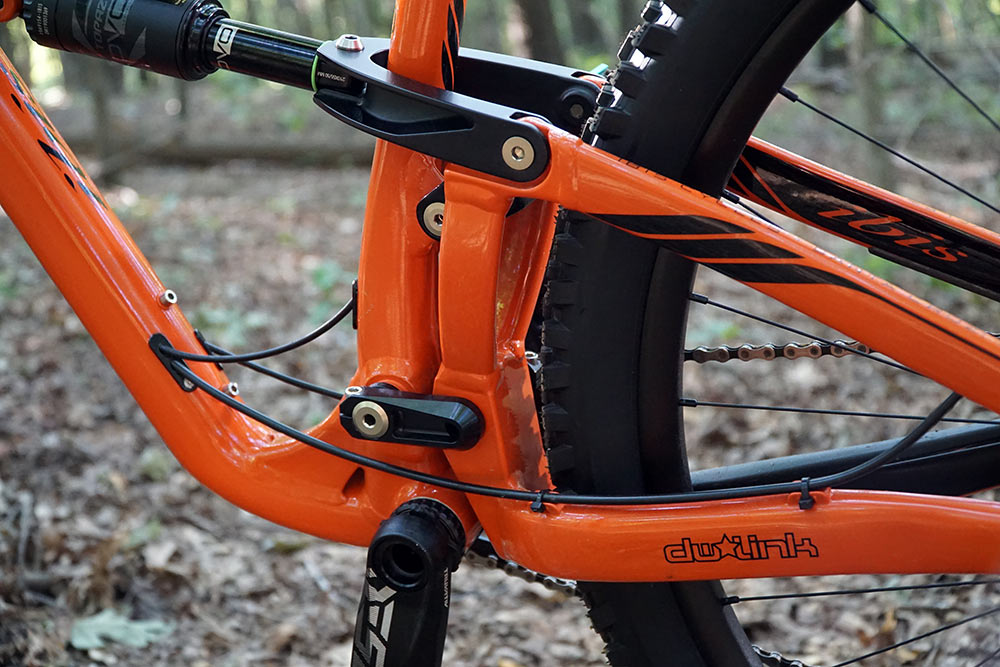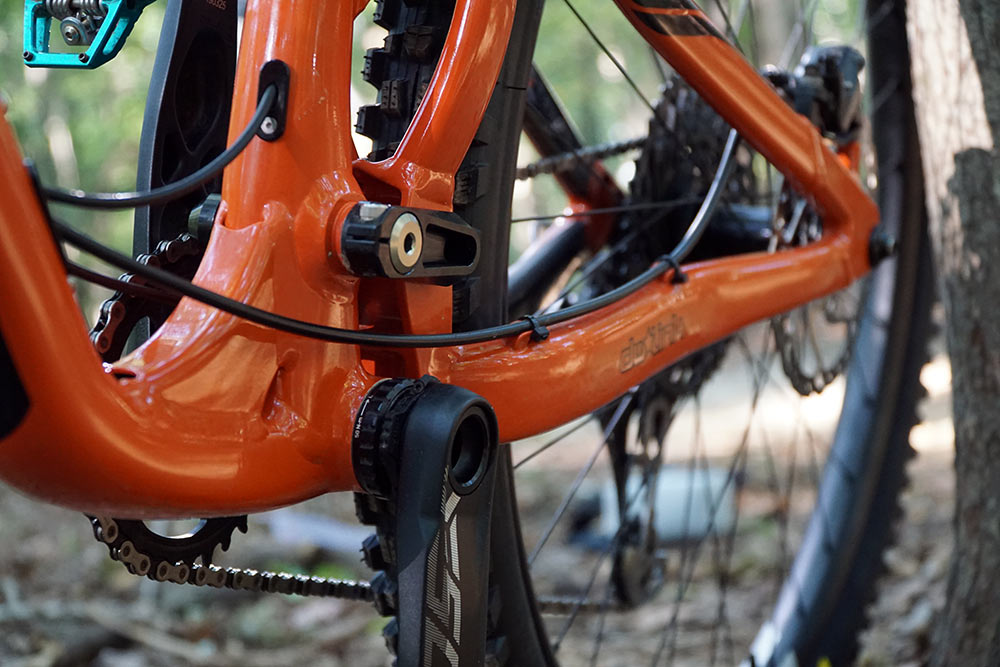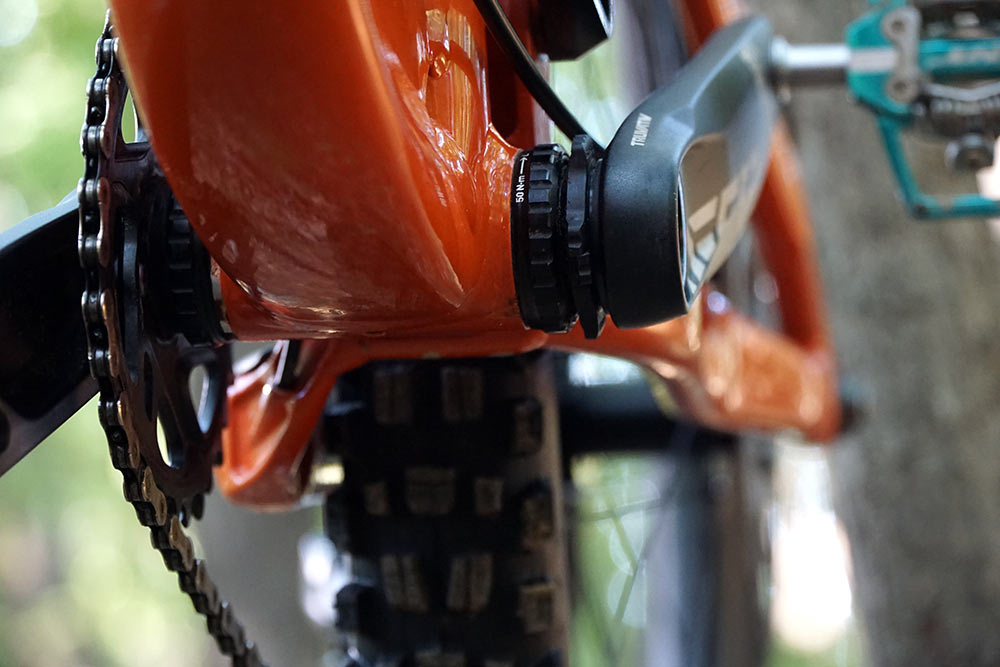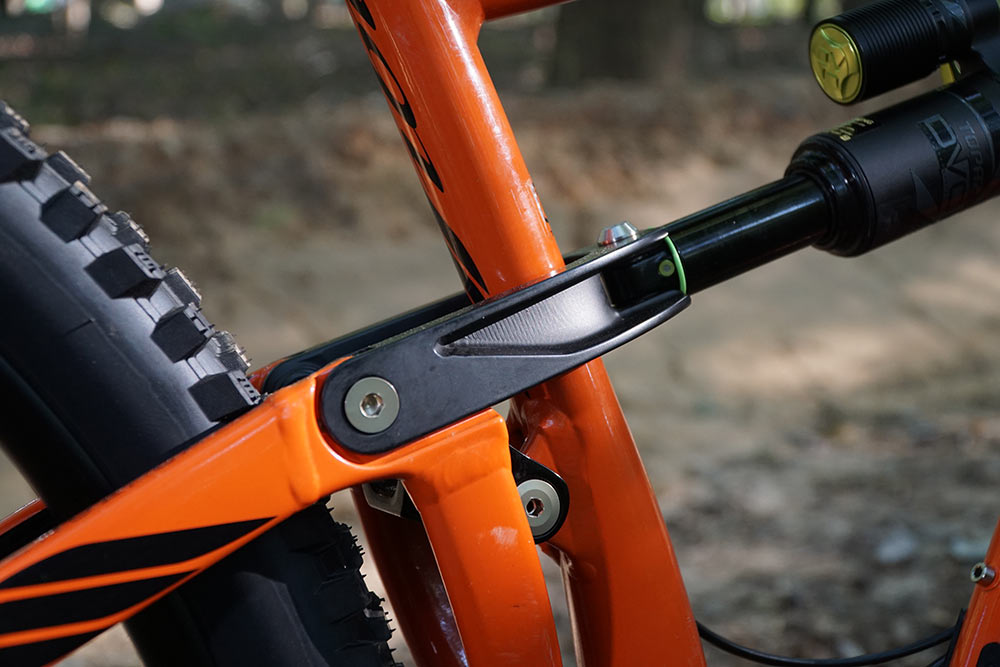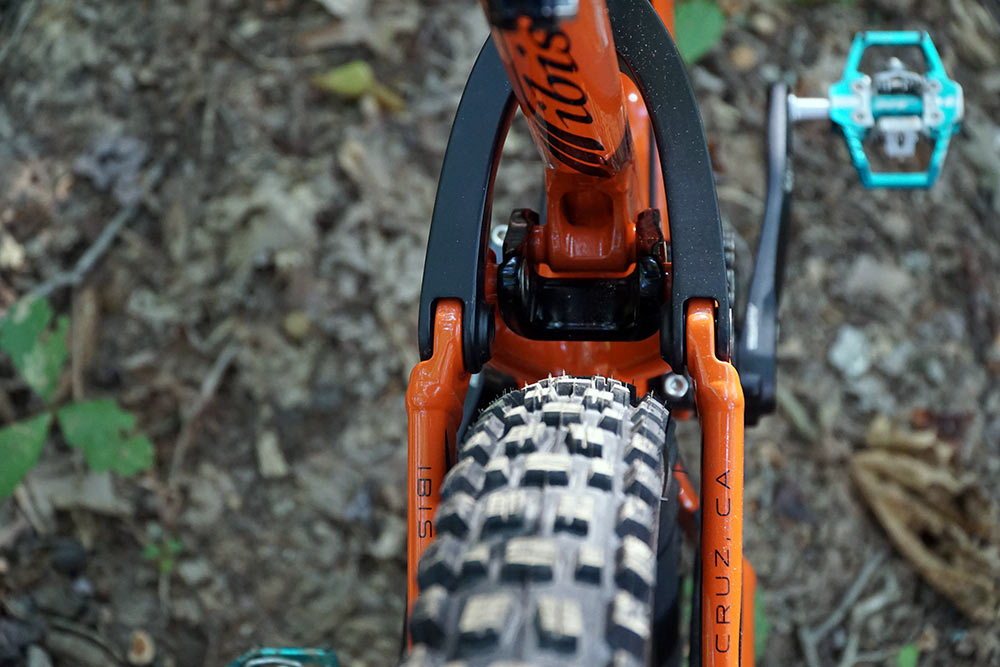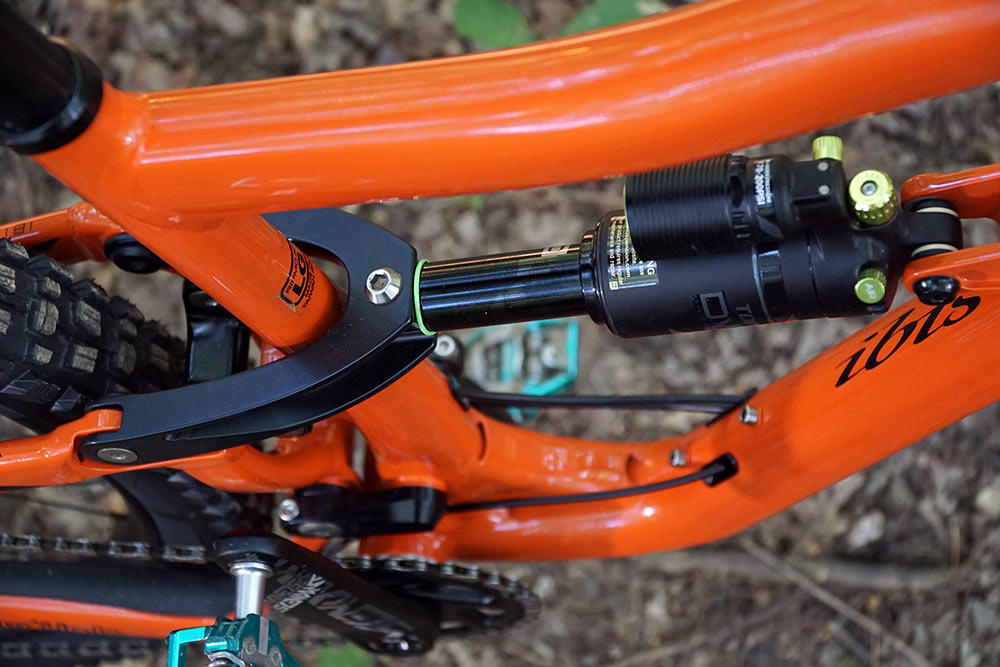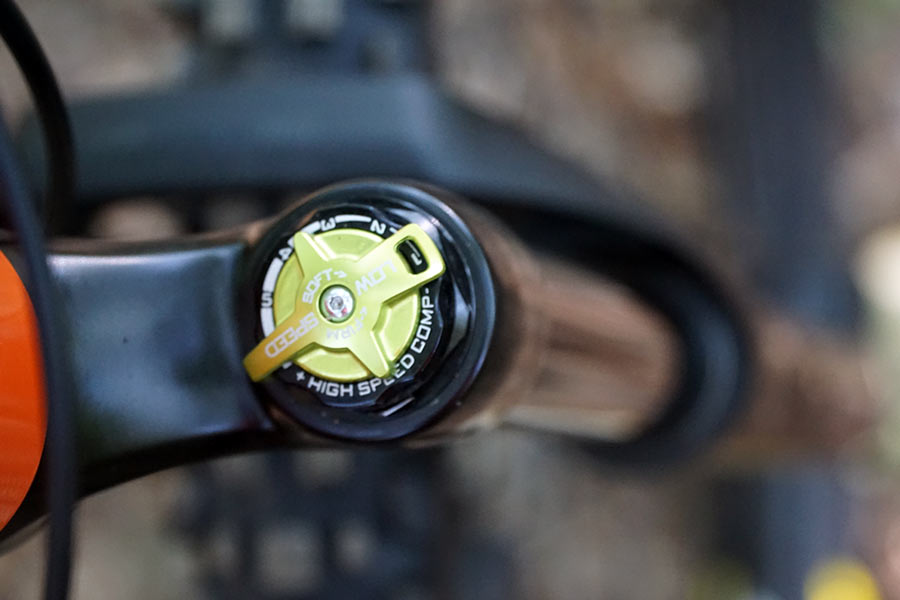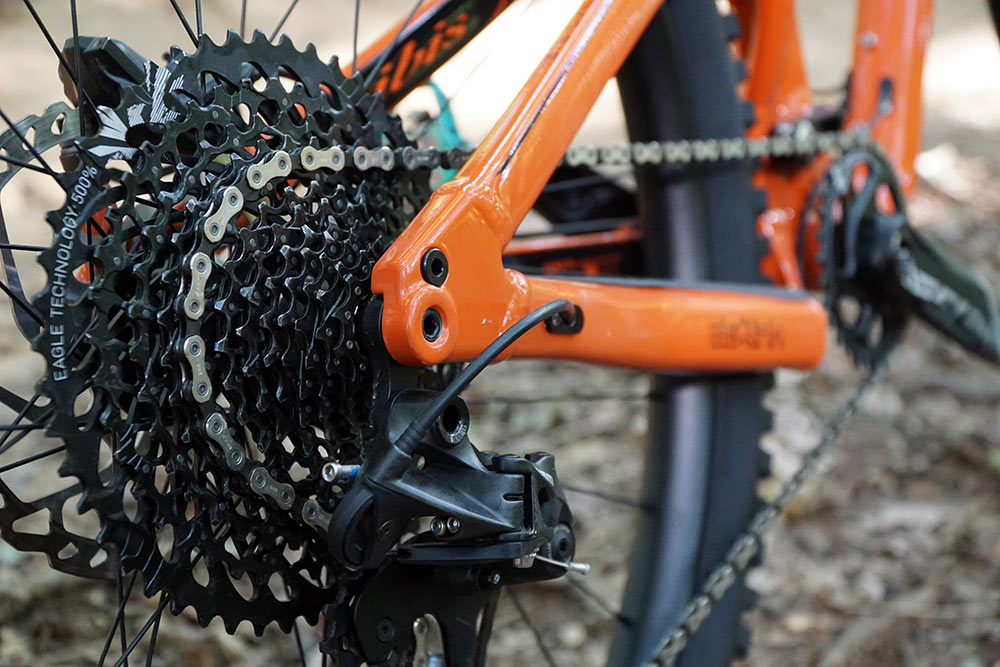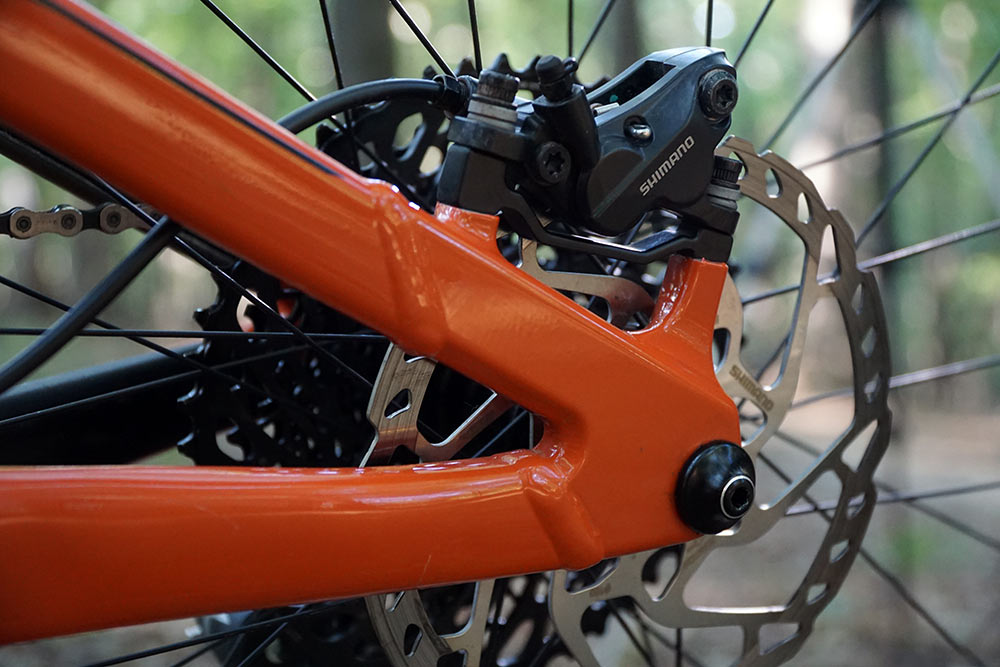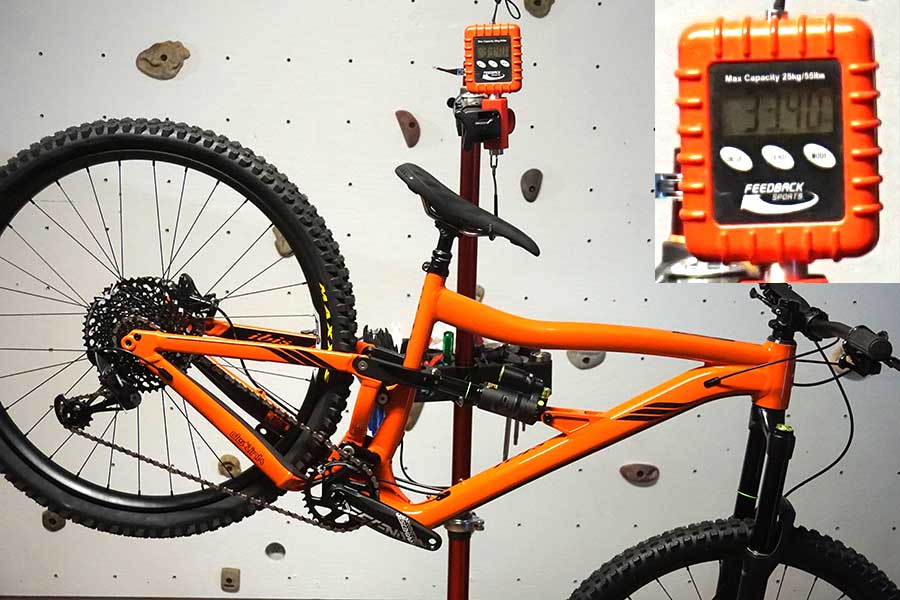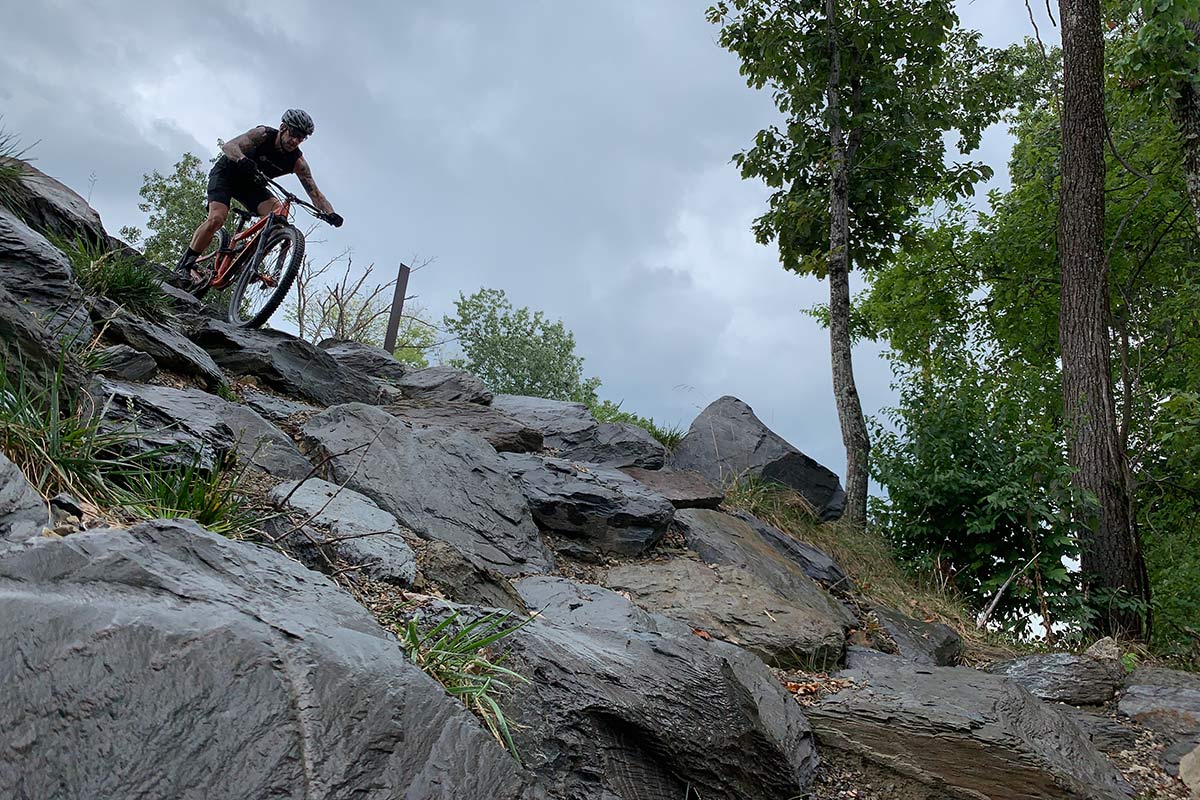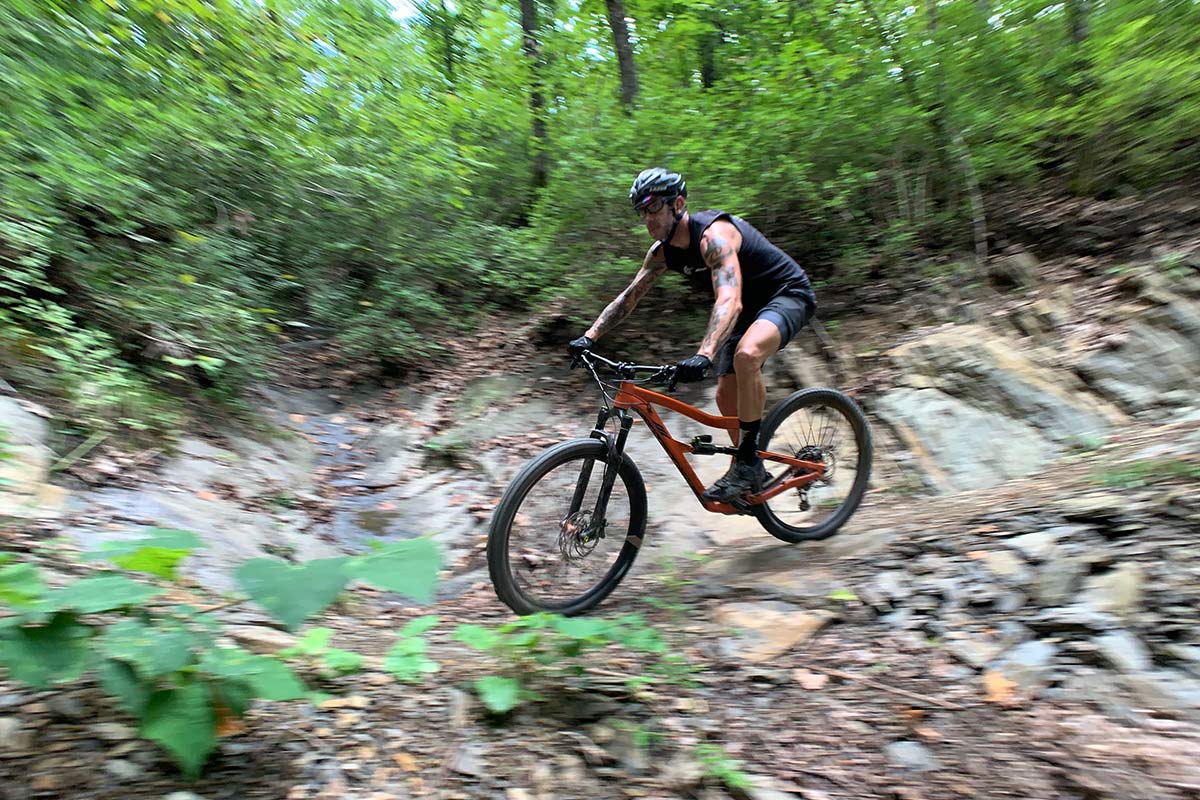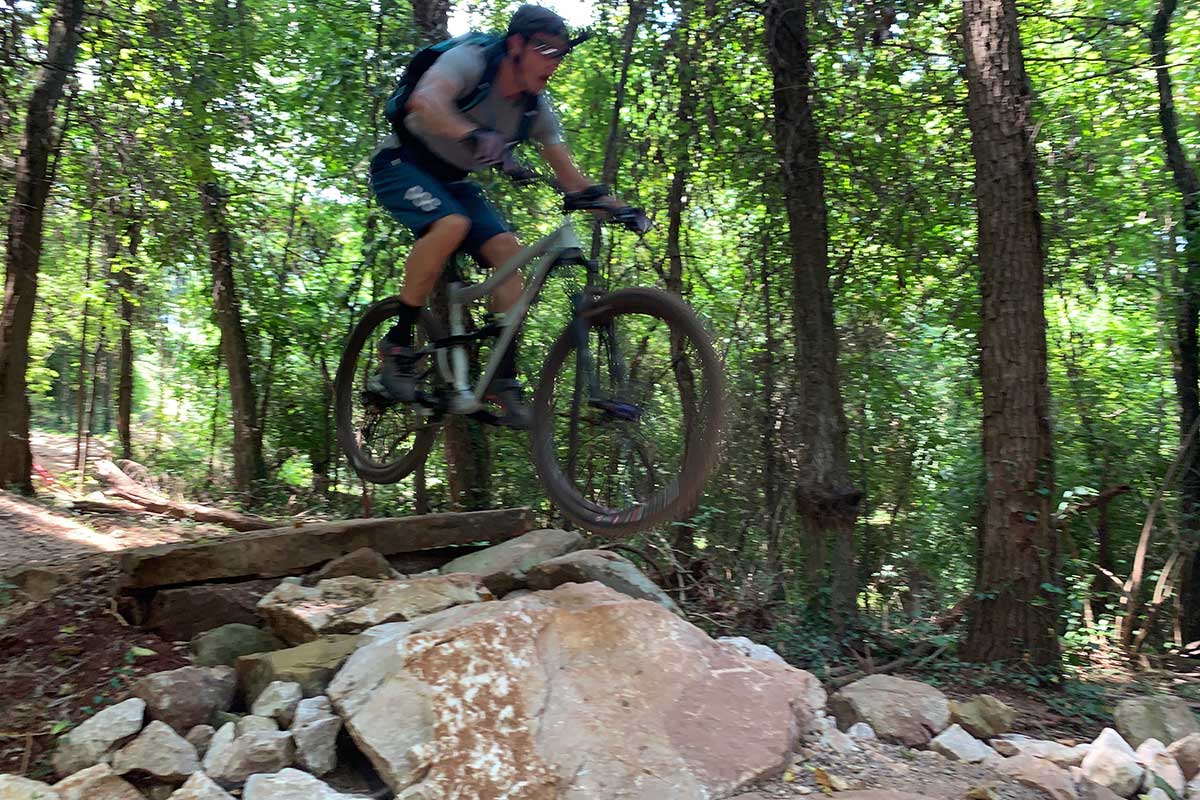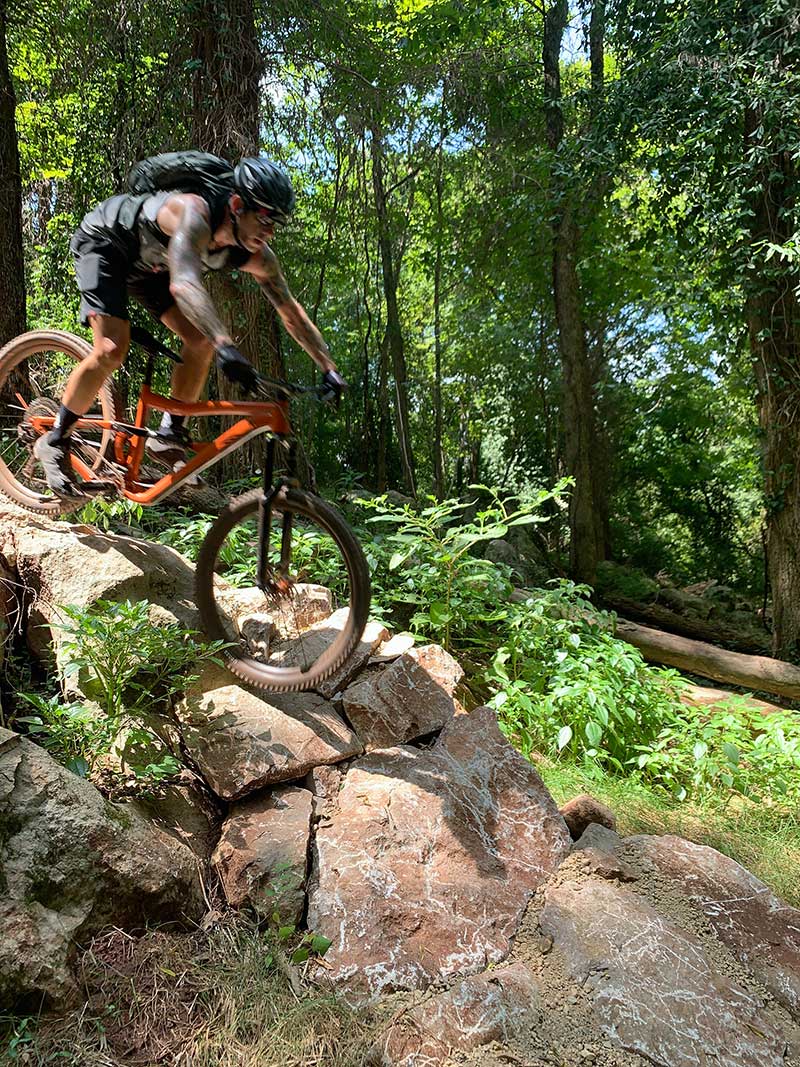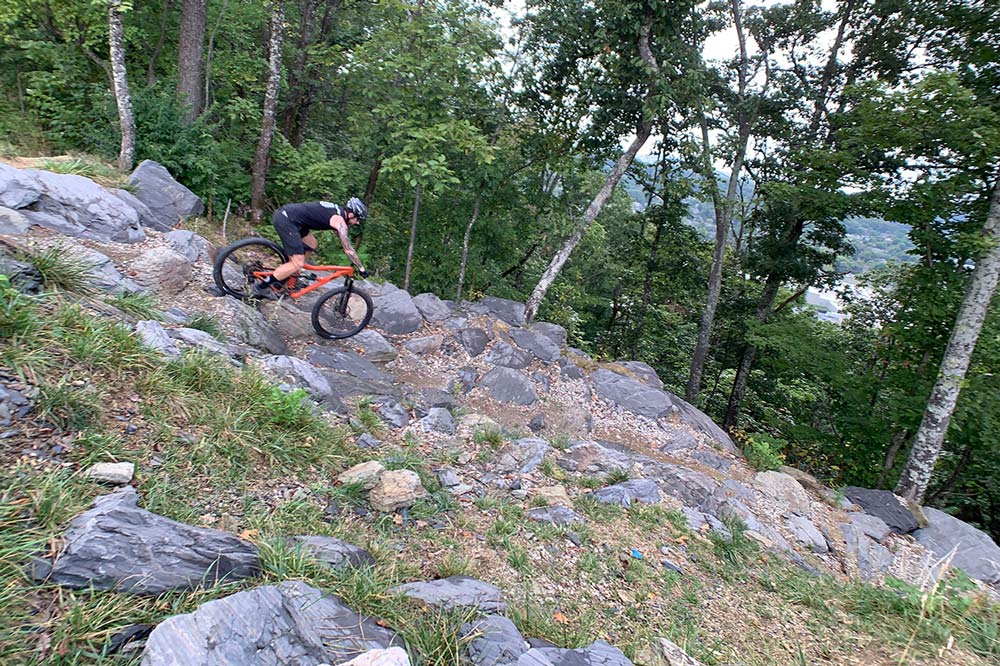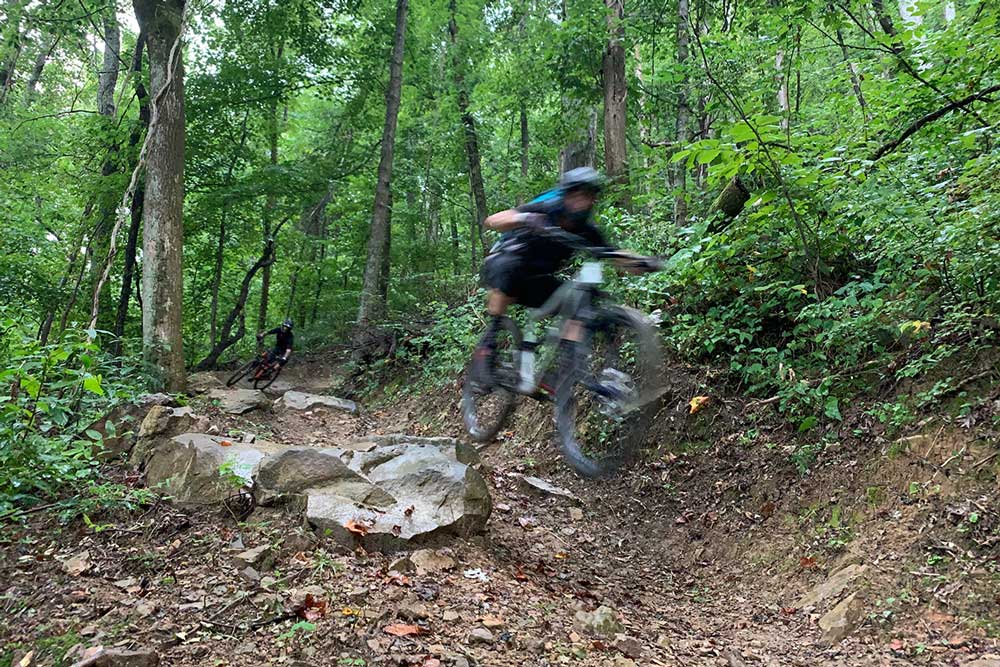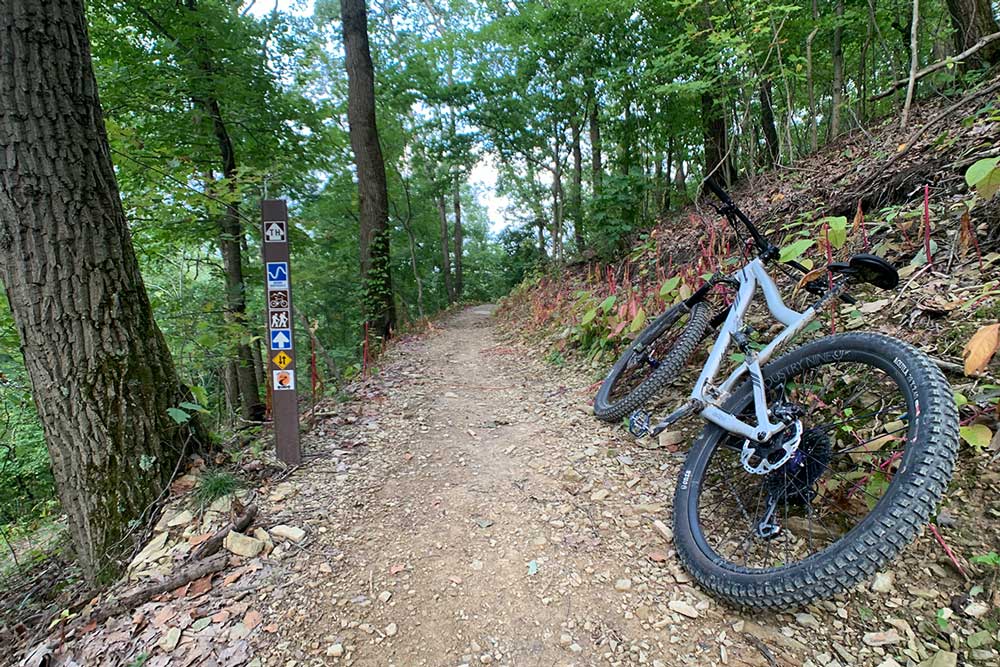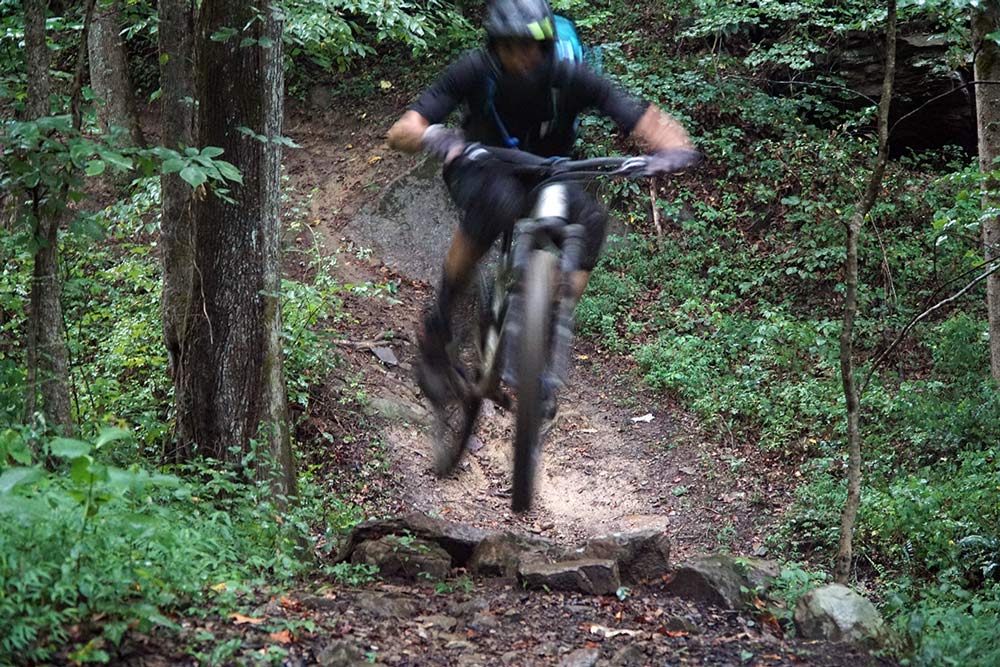The new Ibis Ripmo AF is their most affordable entry into the Ibis ecosystem, but it doesn’t skimp on performance or spec to get there. With a slightly more aggressive frame than it’s carbon counterpart, and coil spring compatibility, and a starting price with DVO suspension of just $3,000, it’s a great way to get on a bigger bike with a proven pedigree. We took two of them to Eastern Tennessee’s best trails, from Knoxville to Windrock to Johnson City. Between them, we hit everything from rough and rowdy cross country singletrack to pro-level enduro trails. Here’s how it went down. And up. And all around!
Ibis Ripmo AF details & actual weight
Our bikes came in with the GX build, which retails for $4,299. We did swap out a few parts for our trip (Industry Nine, Onza and S’manie saddles helped support the Tennessee trip), but it’s shown here in stock trim.
Slacker head angles and steeper seat tubes are all the rage, along with stretched top tubes and longer reach measurements. Fortunately, the Ripmo AF does this without making things weird. The 64.9º head angle pushes the fork out front far enough to keep it stable on the descents, but without getting twitchy on the climbs.
Cables run internally through the downtube, with a mix of internal and external routing beyond that to the rear of the bike.
It’s a 1x specific design, and you can add a removable ISCG05 mount for using chain guides or bash guards. Or both.
The DW-Link suspension provides 147mm of efficient, effective suspension. The lower link pivots on Igus bushings, which Ibis says are perfect for high stress, low rotation placements.
The rear shift cable moves cleanly into the chainstay with some beautiful shaping on the chainstay yoke.
A machined alloy shock mount clevis replaces the carbon version on the carbon bike. Virtually every tube on this bike is oversized, making it super stout…but also a little heavy at 8.25lb for a size medium (claimed).
It comes with 29×2.5″ Maxxis tires, but they rate it to fit 2.6″ treads.
Besides just the frame, which is awesome, the real highlight of the bikes is the inclusion of a DVO suspension pairing. It’s good stuff, and a surprising spec for a bike at this price point. The rear is a Topaz Air with external rebound adjustment and three-position compression knob that goes from full open to very firm.
The Diamond fork gets a ton of adjustability, including both high- and low-speed compression dials, low speed rebound, and DVO’s OTT. That stands for Off The Top, and it’s a preload adjustment for the fork’s negative coil spring that lets you fine tune the feel of the first 30% of travel with minimal impact on the air spring’s feel. The effects are noticeable. Once I got it dialed to my liking, the rough, mottled bike park berm-and-jump lines at Windrock become much more pleasant.
The burly frame keeps everything moving the way it’s supposed to, from shifting to suspension to steering.
Big brakes (180mm rear, 203mm front) slow the bike down in a hurry, which was a good thing on the pad-burning descents we rolled.
The top two trim levels get a BikeYoke dropper, which has a handy reset bolt at the top that simplifies service. Ibis’ house-brand stem and bar, with Lizard Skins’ lock-on grips, round out the build…along with Ibis alloy S35 wheels on all three trim levels. For the full build specs and tech overview, check out the launch coverage.
Actual weight for a size large frame with the GX build (already set up tubeless) is 33.4lb.
Ibis Ripmo AF First Rides Review
Between the three trail systems and bike parks we visited for our test (Knoxville’s Urban Wilderness, Neko Mullaly’s Windrock Bike Park, and Johnson City’s new Tannery Knobs Mountain Bike Park), we hit everything from flow trail to rock gardens to rooty, roughcut singletrack, to jump lines to heavily armored rocky descents that just wouldn’t end. We’ll have full reviews on each location coming up this fall, but suffice to say, if you’re looking for a long weekend of killer riding, put those on your list.
They’re also great proving grounds for a bike like the Ripmo AF. The suspension pedals along smoothly on flat and rolling sections. Despite the bike’s weight, we never felt like it was slowing us down. Maybe tiring the legs a bit, but it didn’t feel sluggish.
That said, we eased ourselves into it by starting at Knoxville, which was also our longest ride day by several hours. I also used this to ease Watts into writing a proper review by sending him the kinds of questions I’m mulling over while riding. Here’s his answers:
How did it fit?
Fine? All of the new “progressive geometry” bikes feel a little short to me, initially, but once you settle in, it works. (FYI: Watt’s is 6’0″ with a 34″ inseam and rode a size large. I [Tyler] am 6’2″ with 34″ inseam and rode the XL silver bike)
How did it descend? (rough, smooth, stable, twitchy, planted, etc.?)
Fine? Stable. Slack head tubes can make handling seem “floppy.” At least to me. But at speed, it locks in.
How did it climb?
Fine? Sometimes I fail to navigate long travel bikes through tight switchbacks climbing, but the Ripmo did great.
How did it pedal on the flat and flowy stuff?
Fine? I mean… It’s a biggish bike It’s not going to be a snappy hard tail.
Did the suspension seem to maintain good traction and soak up the impacts?
Yes. I’m relatively unfamiliar with the suspension platform on these bikes… DVO, right?…and could definitely have benefitted from some tuning, but even without bothering, the platform was solid.
Anything in particular stand out about the bike, good or bad?
Ummm…. I crashed on it. Hard. And while that has NOTHING to do with the bike, and everything to do with me… my psyche is still reeling a little bit and honestly doesn’t want to think about the bike.
For the price (roughly $3k), how would you rate its value?
Solid. Ibis has, for a while, existed on the margins of what a lot of people think they can afford or want to invest in. So this makes a “boutique” bike “accessible.” Which is pretty big.
Any other thoughts about the bike?
It was orange. And like I said… I crashed it. Hard.
I’m not a particularly bold rider. I tend to stick to XC and Gravel because while going hard hurts, there’s wayyyyyyy less risk of hurting yourself. And I’m 43 years old and it takes longer to heal from dumb shit. Like when I hurt my shoulder at my son’s 12th birthday and it might never be the same again. I’d have shrugged that off at 30.
This bike made me bold.
There was a learning curve on how to weight it, as it seemed front heavy on the jumps and table tops… but once I got that, I WANTED to keep it in the air. Which was ultimately my undoing. Le sigh.
Which reminded me (Tyler) about the front end. Yes, it was a little harder to unweight for quick lifts off the ground. It took more effort. Fortunately 160mm of fork travel goes a long way toward reducing the need to lift it over stuff. I don’t think it was the geometry of the bike that caused this – the chainstay length is similar to other bikes in this travel category. It’s probably just the weight. So don’t skip arm day.
It’s easy to say a good all-mountain/enduro bike “shines on the downhills”, but this bike kinda shines everywhere. It certainly handled the rocky bits of Year Round Get Down in Knoxville, along with those at Windrock. Other than a little fine tuning to the shifting (we built these bikes the day before hitting the road), neither of them had any issues for the entire three days of riding.
We become more and more comfortable with the jumps and drops, but the Ripmo AF seemed comfortable with them from the start. So we hit them a lot. Because they’re fun. Even when we forgot to put the rear shock back into “Descend” mode, the rear end wasn’t harsh. It’s a bike that seems to smooth the rough stuff at any speed, too, which is good for riders just getting into a long travel bike…it’s not intimidating, and it doesn’t require faster speeds to settle into itself.
That said, it does require you to get the suspension setup properly…check our suspension setup guide and read through DVO’s manual to see how OTT works. You’ll get more out of the bike if you do. Which advanced riders will really appreciate. And this bike is aimed every bit as much at those advanced riders, particularly those who tend to break carbon frames. The slacker front end, big travel and fat tire clearance give you plenty of margin for error.
After three days riding the bike, both Watts and I drove home impressed. It’s nice to see development efforts put into lower priced bikes. So, in some ways, Ibis has both lowered and raised the bar with the new Ripmo AF.
OK, one more jump. Get the full specs and tech overview on the new Ripmo AF here.
